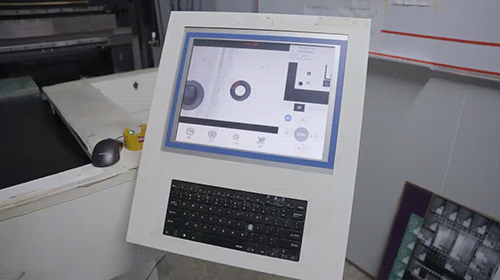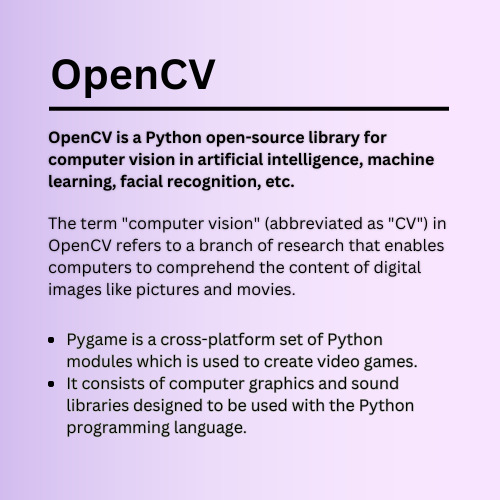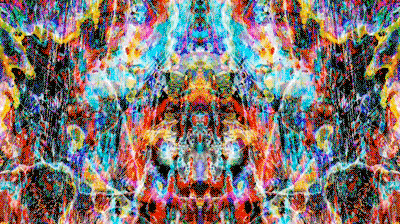#OpenCV
Explore tagged Tumblr posts
Text



Flexible circuit boards manufacturing (JLCPCB, 2023)
Inkjet print head uses a fiducial camera for registering an FPC panel, and after alignment it prints graphics with UV-cureable epoxy in two passes
#jlcpcb#pcb#fpc#manufacturing#manufacture#factory#electronics#fiducial camera#camera#cv#opencv#computer vision
137 notes
·
View notes
Text
playing with OpenCV and image processing in Python ꒰ᐢ. .ᐢ꒱₊˚⊹


#image processing#opencv#python#creative coding#blythe doll#webcore#small art blog#small artist#dollblr#creepycore#surreal
6 notes
·
View notes
Text
KNN Algorithm | Learn About Artificial Intelligence
The k-Nearest Neighbors (KNN) algorithm is a simple, versatile, and popular machine learning method used for both classification and regression tasks, making predictions based on the proximity of data points to their nearest neighbors in a dataset.
Detect Triangle shape inside image using Java Open CV //Triangle Transform Computer Vision part one

KNN is a supervised learning algorithm, meaning it learns from labeled data to make predictions on new, unseen data. KNN relies on a distance metric.
Lazy Learning: It's considered a "lazy learner" because it doesn't have a dedicated training phase; instead, it stores the training data and uses it directly for prediction.
Proximity-Based: KNN relies on the principle that similar data points are located near each other, and it makes predictions based on the classes or values of the nearest neighbors.
Classification: In classification, KNN assigns a new data point to the class that is most common among its k nearest neighbors.
Regression: In regression, KNN predicts a value by averaging the values of the k nearest neighbors.
Parameter k: The parameter 'k' determines the number of nearest neighbors to consider when making a prediction.
#machine learning#artificial image#artificial intelligence#knn algorithm#opencv#image processing#ai image#ai image generator#animation#animation practice#animation design#3d printing#3d image producing#3d image process
5 notes
·
View notes
Text
Old Acid Cam video
3 notes
·
View notes
Text
6 Fun and Educational OpenCV Projects for Coding Enthusiasts
OpenCV (Open Source Computer Vision Library) is an open source computer vision and machine learning software library used to detect and recognize objects in images and videos. It is one of the most popular coding libraries for the development of computer vision applications. OpenCV supports many programming languages including C++, Python, Java, and more.
Coding enthusiasts who are looking for fun and educational OpenCV projects can find plenty of interesting ones across the web. From creating facial recognition applications to motion detection and tracking, there are numerous projects that can help hone coding skills and gain a better understanding of OpenCV. Here are 6 fun and educational OpenCV projects for coding enthusiasts:
1. Facial Recognition Application: This project involves creating an application that can detect faces in images and videos and recognize them. It can be used to create face authentication systems, such as unlocking a smartphone or computer with a face scan.
2. Motion Detection and Tracking: This project involves creating a program that can detect and track moving objects in videos. It can be used for applications such as surveillance cameras and self-driving cars.
3. 3D Augmented Reality: This project involves creating an augmented reality application that can track 3D objects in real time. It can be used for applications such as gaming and virtual reality.
4. Image Processing: This project involves creating a program that can manipulate and process images. It can be used for applications such as image recognition and filtering.
5. Object Detection: This project involves creating a program that can detect objects in images and videos. It can be used for applications such as autonomous vehicles, robotics, and medical imaging.
6. Text Detection: This project involves creating a program that can detect text in images and videos. It can be used for applications such as optical character recognition and document scanning.
These are just some of the many fun and educational OpenCV projects that coding enthusiasts can explore. With a little bit of research and practice, anyone can create amazing applications with OpenCV.
4 notes
·
View notes
Text
Turn your face into a hilariously cartoonified version of itself using OpenCV and Python. Learn how to cartoonify real-time webcam video using OpenCV and Python. A short yet fun tutorial on edge detection, color filtering, and live video effects.
0 notes
Text
The Most Important Step in Learning Computer Vision is Writing Your First Line of Code.
Computer Vision is one of the most in-demand skills in the tech industry. But moving from theory to practical application can be intimidating. Where do you even start?
You start with a simple, achievable project.
I've published a step-by-step tutorial specifically for beginners. It's not about complex theory; it's about building momentum and confidence. You will learn how to:
✅ Install and set up the essential OpenCV library in Python. ✅ Write a script to load, display, and manipulate your first image. ✅ Understand the fundamental code blocks used in nearly every CV project.
Investing 15 minutes in this first practical step can be the catalyst for your entire learning journey.
🔗 Build your first project today
0 notes
Text
Want to customize your embedded Linux system with Buildroot on the Forlinx OK3588-C platform?

This step-by-step guide walks you through compiling Buildroot 5.10.209, adding system tools like OpenCV4, and preparing a complete cross-compilation environment.
Perfect for embedded developers working with ARM64!
0 notes
Text

OpenCV . . . . for more information and tutorial https://bit.ly/3XAqJYt check the above link
0 notes
Text

Practical Image Processing with OpenCV
Get the opencv projects ideas and services at Takeoff projects, opencv for computer engineering students with codes. Opencv and python projects on ML, DL, AI and many more using different number of concepts. The projects provided in the OpenCV will be great project ideas to establish an extraordinary portfolio of projects. GitHub contains a collection of BE/B Tech/M tech and diploma students open source idea with source code for OpenCv projects. Takeoff projects also assist students in their research and academic project related grips. OpenCV is almost implemented in all the organizations and is compatible with different programming languages like python, java, c++ etc We have selected some of the most interesting projects in the OpenCV and as much as possible, Takeoff projects briefly explain all the projects with enough instructions in executing these projects by ones wise are those who did not have any basic knowledge in computers can follow through the instructions.
0 notes
Text
#coding#artificial intelligence#software engineering#frontend#learn to code#html5 css3#python#css3#htmlcoding#html5#datascience#data scientist#opencv
0 notes
Text
simple object tracking pipeline i put together :3
it’s really basic, just a threshold and a contour search, but it feels good to have an actual thing because i accomplished the whole task
1 note
·
View note
Text
Making Science Fiction a Reality through Cutting-Edge OpenCV Projects
Science fiction has long captivated the minds and imaginations of people, offering glimpses of a fantastical future filled with advanced technology, interstellar travel, and otherworldly beings. While many may view these stories as pure fantasy, the truth is that science fiction has often served as a source of inspiration for real-life innovation and progress. In fact, with the rapid advancement of technology and the rise of cutting-edge OpenCV projects, we are closer than ever to turning science fiction into reality.
One of the most exciting areas where science fiction is becoming a reality is in space exploration. For decades, science fiction has envisioned a future where humans travel to other planets and establish colonies on distant worlds. This idea may have seemed far-fetched, but with the development of space technologies such as reusable rockets and advanced propulsion systems, space agencies and private companies are now actively working towards making this vision a reality.
For instance, SpaceX, founded by entrepreneur Elon Musk, has made significant strides in developing reusable rockets that can drastically reduce the cost of space travel. The company has successfully launched and landed multiple rockets, and plans to use them in future missions to Mars and beyond. Similarly, NASA has announced its ambitious plan to send humans back to the moon and establish a sustainable presence there, with the goal of eventually sending astronauts to Mars.
In addition to space exploration, science fiction has also inspired advancements in the field of artificial intelligence (AI). In countless science fiction stories, AI is portrayed as a powerful and intelligent being capable of surpassing human intelligence. While we may not have reached that level yet, AI technology has made significant progress in recent years and is being used in various industries, from healthcare to finance.
One of the most notable examples of AI in action is self-driving cars. This technology was once only seen in science fiction movies, but today, companies like Tesla and Google's Waymo are testing and implementing self-driving cars on the roads. These vehicles use advanced AI algorithms and sensors to navigate through traffic, making driving safer and more efficient.
Another field where science fiction is becoming a reality is in the development of advanced prosthetics. In science fiction, we often see characters with robotic limbs that are not only functional but also enhance their abilities. With advancements in robotics and bioengineering, we are now seeing the first steps towards creating such advanced prosthetics.
For instance, the Defense Advanced Research Projects Agency (DARPA) has been working on a project called the 'LUKE Arm,' inspired by the robotic arm used by Luke Skywalker in the Star Wars franchise. This prosthetic arm is designed to provide amputees with a greater range of motion and control, allowing them to perform tasks that were once impossible.
Apart from these examples, there are countless other cutting-edge projects that are bringing science fiction to life. From 3D printing organs to developing mind-controlled prosthetics, the possibilities are endless. These projects not only showcase the incredible advancements in technology but also highlight the power of imagination and how science fiction can drive innovation.
However, with every technological advancement comes ethical and moral concerns. Science fiction has often warned us of the potential dangers of technology, and it is crucial to address these concerns as we move towards a sci-fi-inspired future. This requires responsible and ethical development, as well as proper regulations and guidelines in place to ensure the safety and well-being of society.
In conclusion, science fiction has long been a source of inspiration for groundbreaking ideas and developments. With the rise of cutting-edge projects, we are witnessing the transformation of science fiction into reality. From space exploration to artificial intelligence, these advancements are not only pushing the boundaries of what we once thought was possible but also shaping the future of humanity. As we continue to push the limits of technology, we must also remember to do so with caution and responsibility, ensuring a brighter and more equitable future for all.
0 notes
Text
Want your computer to follow and monitor stuff around? Built this opencv object tracker with Python + OpenCV. Works well enough to brag about. #opencv #python
0 notes
